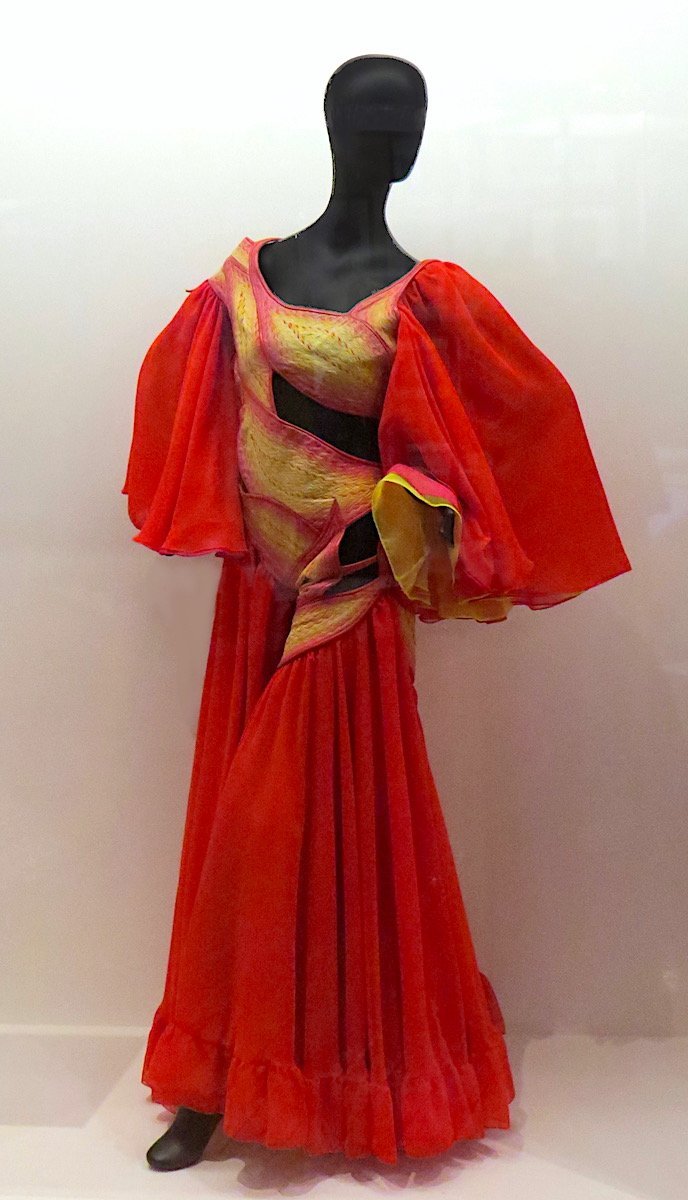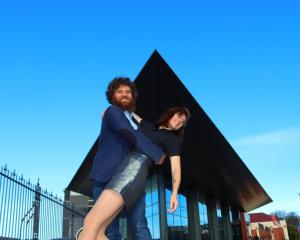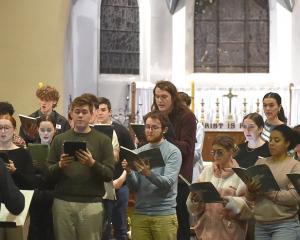
(Toitū Otago Settlers Museum)
"Eden in Dunedin" displays many of the finest articles of women’s clothing and accessories from the Eden Hore Central Otago fashion collection.
Hore’s remarkable and unique collection, assembled during the 1970s and 1980s and now owned by the Central Otago District Council, focuses primarily on the fine fashion of the era in which it was collected. From lush evening gowns to quirky daywear, we are transported into an era bookended by hippiedom and grunge styles, while also heavily influenced by earlier eras.
The display showcases items from many top New Zealand designers, and ranges in style from Rosalie Gwilliam’s heavily sequinned evening gown to James Jaye Leather’s stark but sexy leather trouser-suit. June Mercer’s award-winning crocheted outfit stands alongside Beverley Horne’s startling merino and lurex gown and hot pants. Accessories range from Vinka Lucas’s stunning flapper-inspired cloche hat to chunky but stylish leather shoulder-bags.
Every item is thoroughly documented with interactive displays of text and photographs of the pieces being modelled. The exhibition is completed by video and photographic installations which provide not only further information about the overall collection but also a taste of its location and the process by which Eden Hore acquired the pieces.

(Brett McDowell Gallery)
Brett McDowell Gallery is gaudily strewn with over 50 works by artist Nicola Jackson.
The darkness of the artist’s macabre humorous works is counterbalanced by the freshness and brightness of the colours of the pieces, giving the gallery a Dia del Muerte feel. With the works chosen at least partly to coincide with the 150th anniversary of the Otago Medical School, many of the pieces focus on matters medical, with anatomies, maladies and remedies being front and centre.
Whereas a few of the pieces are large, notably an impressive cotton quilt and a vibrantly pink jar, many of the works are small, icon-like pieces, with tiny images centred within equally artistic frames.
There are strong elements of the surreal in the works and in the exhibition overall, the small paintings placed against guacamole-green walls and seemingly guarded by an array of gleefully grinning skulls.
Two intriguing installations bookend the exhibition, both cabinets of curiosities. One is a vibrant collection of "Symptoms and medicaments", with shelves of happy, friendly viruses interspersed with tablets and capsules.
The other, in extreme contrast, is an austere black and white, the jars of remedies adding their unnerving whimsy by virtue of their names.
All are real medieval panaceas, with contents ranging from "milk and soot" to "knee dirt".

(The Artist’s Room)
Inge Doesburg delights with her soft, misty landscapes at The Artist’s Room.
In a series of works which includes acrylic paintings, intaglio, dry-point and etching, the artist has captured the emptiness and airiness of the south. More experimental works, such as the meditative solar-etched tree of Soliloquy suggest that the artist is continuing to add strings to an already impressive artistic bow. Plaster is used to create texture in stark landscapes — or more correctly skyscapes — of Waipiata and the Wairarapa, turning the acrylic surfaces into gently toned gesso. There is a freedom to the mark-making in works such as Flagstaff Walk which are also an extension of Doesburg’s previous work and an indication of her confidence in her style.
In the current exhibition, Doesburg has extended her linking of art with poetry, drawing inspiration from the words of writers ranging from James K. Baxter to Goethe. Inspiration is also clearly taken from New Zealand art, with nods to Doesburg’s antecedents in the McCahon-esque hills of From Flagstaff and Hotere-like style and composition of the Goethe-annotated Untitled.
It is the artist’s own hallmark style which takes centre stage, however, with works such as the rain-drenched Listening to the Mountain couplet, and Karitane, jutting like rusted roof-iron into a sleepy, milky Pacific.
By James Dignan












